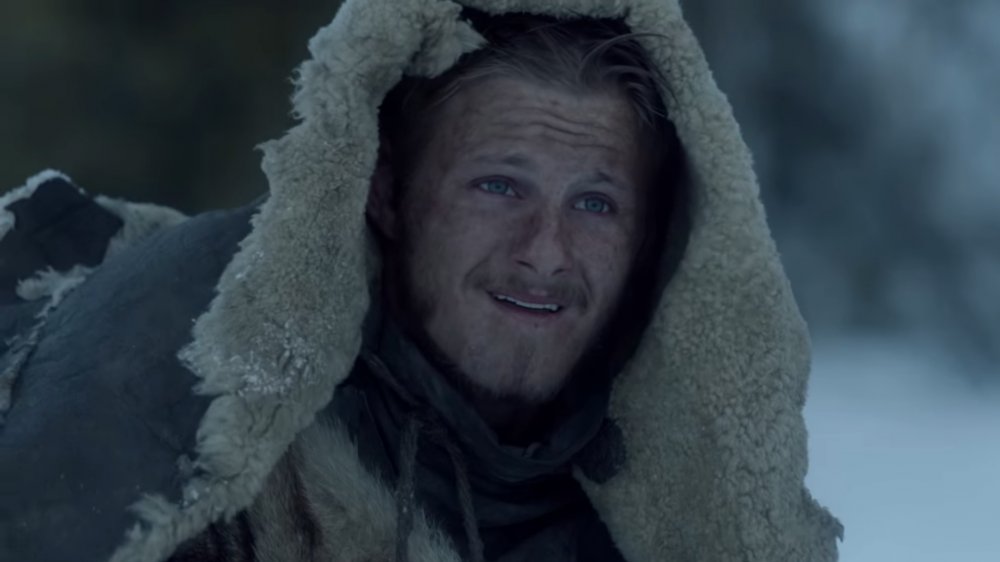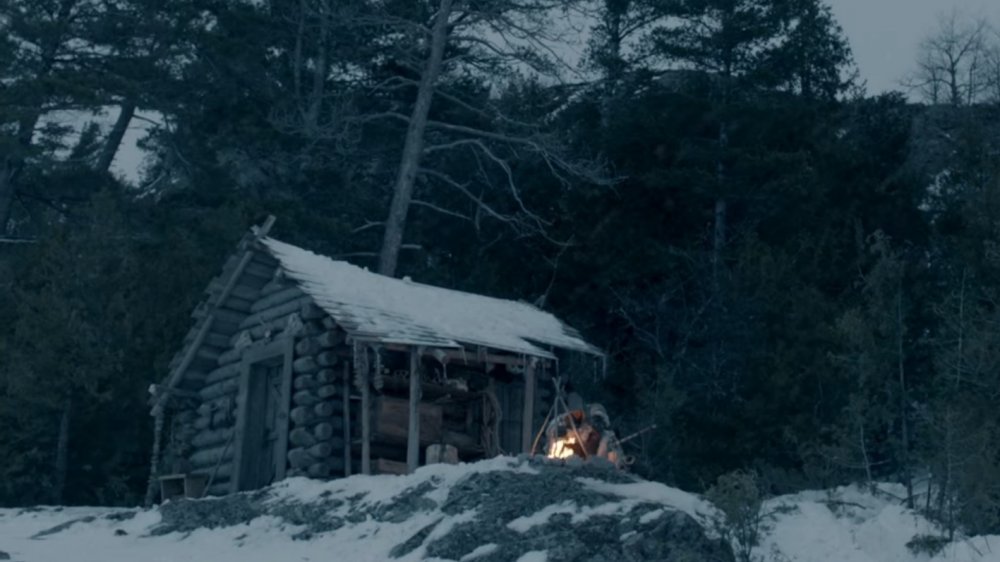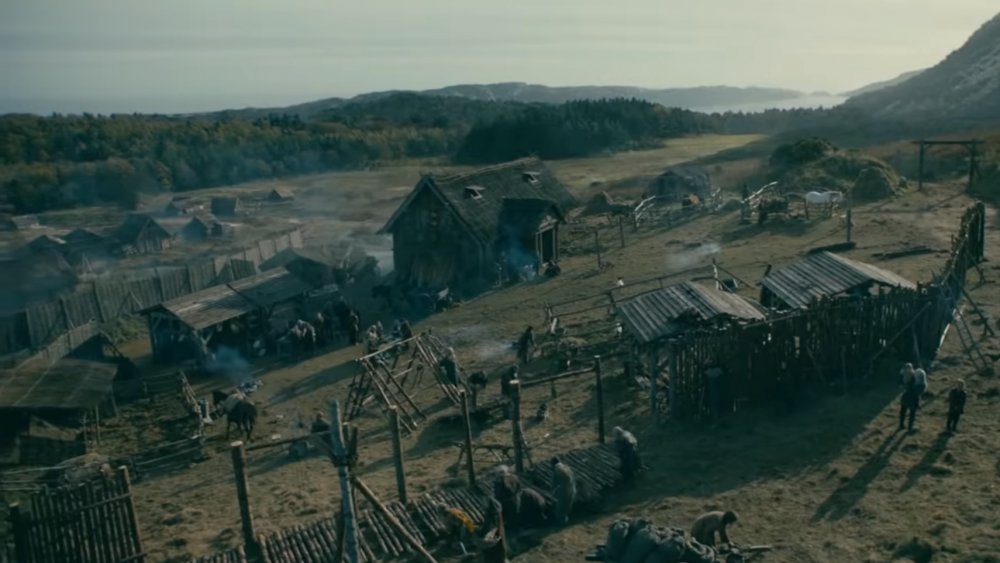The Bjorn Detail That Has Vikings Fans Confused
Historic accuracy can be a tricky balancing act for TV shows to contend with. If there are too many anachronisms, all people do is complain about not getting things right. But if a show adheres too strictly to the rules of the era in which it takes place, it runs the risk of coming off stodgy and unrelatable to the audience. This conundrum is something that History's original scripted drama Vikings usually manages to avoid — "usually" being the keyword in that sentence.
Given that Vikings was the first-ever scripted series to premiere on the otherwise documentary-based History channel, it's expected that it's more historically accurate than not. For the most part, the show succeeds at striking the right balance of fact and fiction in its ninth-century Scandanavian setting. Vikings draws its inspiration from the Norse saga Tale of a Ragnar Lodbrok, which was written in the 13th century and is itself a mix of true history and mythology. Fittingly, Vikings sometimes errs on the side of fudging what we know of the facts to produce a compelling story. After all, it's a tactic storytellers have used since the birth of the medium.
However, sometimes Vikings just straight-up fails to get it right. An astute fan caught an inaccuracy involving one of the series' stars that could have been pretty easy to fix, and others have taken notice. Here's the Bjorn detail that has Vikings fans confused.
Bjorn's inaccurate log cabin getaway
One instance in which Vikings slipped in an unnecessary historic inaccuracy occurred during the season 4 episode "Kill the Queen." While the rest of his clan engage in ongoing political dramas, Bjorn Ragnarsson (Alexander Ludwig) retreats to the far north to go on a spiritual retreat of sorts. He feels the need to prove to his father, the Viking ruler Ragnar (Travis Fimmel), that he's strong enough to handle the leadership duties he'll eventually have to take on. In order to demonstrate this, Bjorn is determined to survive alone in the wilderness for the winter.
Bjorn already has a place in mind for his retreat: a hunter's cabin in the woods deep in the Scandinavian interior. He settles in at the cabin, which looks like it could be featured in an Architectural Digest pictorial on hygge design. While it makes a nice setting for Bjorn's getaway, there's one big problem with the cabin. As an anonymous commenter at Movie Mistakes pointed out, "Bjorn is living in a log cabin in the mountains. This logging technique was not common until 2-300 years later." Oops!
The truth about Scandinavian log cabins
Though log cabins like the one Bjorn winters in are now common features of Scandanavian design, that wasn't always the case. In the ninth century, when Vikings takes place, the style had been invented, but it hadn't been imported to Scandanavia. Bjorn would have to be living about 900 miles southeast to have access to a log cabin to run away to.
According to the history blog Old European Culture, the type of log cabin building techniques we now associate with Scandanavia actually originated in Slavic regions — or what would today be Czechia, Slovakia, Poland, Ukraine, etc. There's evidence of log cabin style constructions going back thousands of years in those regions. However, it wasn't until much later that the style was brought to Scandanavia. Per Old European Culture, "The same building technique using logs was unknown in Scandinavia until the 11th century, the time of the closest cooperation and intermixing between the Norse and the Slavs."
So, Bjorn's log cabin is indeed about 200 to 300 years ahead of its time. That leaves us with one important question: If not a log cabin, what kind of house would be historically accurate to the time?
How the Vikings actually built their homes
If Bjorn's trek into the wilderness was absolutely historically accurate, his vacation home would be much less picturesque. As we see throughout other parts of the show, Viking homes from the early Medieval period relied on wooden boards, mud, or turf, rather than logs, in their construction.
Writing for Life in Norway, Andrew McKay describes the typical materials used in Viking construction: "Roofs would either be wood, thatched, or turf. The walls were made of either clay, wooden planks, or wattle and daub. The walls were usually built bowed giving the overall shape of a boat."
The minutiae of Scandanavian architectural trends is a pretty tough thing for any show trying to weave history and drama to tackle. While Bjorn's cabin may have stuck out like a big, anachronistic sore thumb to some, it's likely that some viewers didn't even notice the mistake. And besides, it made for a nice distinction from the traditional, less Scandi-chic Viking architecture featured throughout the rest of the show.



